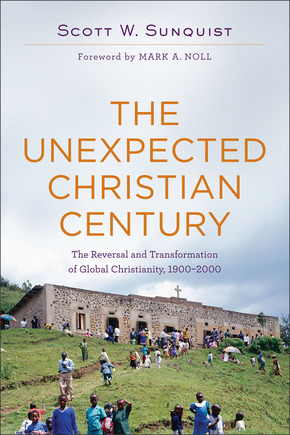 “The twentieth century,” according to Scott Sunquist, “surprised the religionists, the historians, and the politicians.”
“The twentieth century,” according to Scott Sunquist, “surprised the religionists, the historians, and the politicians.”
He explains:
No scholar—or as far as that goes, not even a madman—predicted that at the end of the twentieth century Christianity would not be recognized even as a cultural factor in Europe by the nations that today compose the European Union.
No prognosticator predicted that more Christians would be worshiping each Sunday in China than in Europe or North America.
And, what might be surprising to us today, even the greatest mission leaders at the Edinburgh Missionary Conference in 1910 had pretty much given up on Christianity in Africa. Most of the missionary leaders, even in their most optimistic moments, thought Islam had the upper hand and believed Africa would become a Muslim continent. Fast-forward and we find that the opposite is true, for there are more Christians than Muslims in Africa today.
In his new book, The Unexpected Christian Century: The Reversal and Transformation of Global Christianity, 1900-2000, foreword by Mark Noll (Grand Rapids: Baker Academic, 2015), xvi-xvii, Sunquist identifies the 20th century as one of the three great transformations in Christianity in its two thousand years.
1. The 4th Century
The first took place early in the fourth century, when Christianity began to get imperial recognition in three small nations and one empire: Osrhoene, Armenia, Ethiopia, and the Roman Empire. Royal conversions not only ensured that the religion would not be wiped out by belligerent rulers spreading other religions but also that Christianity would begin to develop differently with the support of kings and queens. Christian buildings began to look very nice. Christian life was no longer threatened. It was possible to fit into the larger culture very comfortably with little need for sacrifice or compromise. Christianity in these kingdoms and empires had moved from being a persecuted minority to being a favored faith. This changed everything.
2. The 15th and 16th Centuries
The second great transformation occurred in the fifteenth and sixteenth centuries. This was the period of the European Reformation, but that was not the supremely important transformation that I am thinking of. From about the 1450s to the 1550s Christianity broke out of its small enclaves of Western Europe, South India, and Ethiopia and became a truly worldwide religion. It didn’t have to happen that way, but it did. Muslim rulers, or certainly the Chinese, could have dominated the world. Instead, and very much for theological reasons, it was the Christians from Iberia who spread the Christian faith to places as far away as the Moluccas, the Kongo (Congo), Peru, and even Japan and China. As late as 1492 it was still not clear whether Christianity would devolve into a tribal faith of Western Europe.
3. The 20th Century
The third great transformation took place in the twentieth century, a great reversal . . . .
It was certainly a reversal in that the majority of Christians—or the global center—moved from the North Atlantic to the Southern Hemisphere and Asia.
But it was also a reversal in that Christianity moved from being centered in Christian nations to being centered in non-Christian nations. Christendom, that remarkable condition of churches supporting states and states supporting Christianity, died. The idea of Christian privilege in society was all but killed. And yet the religion seemed stronger than ever at the end of the twentieth century.
Sunquist cites the following the following global statistics—which I’ve put into a little chart—to show the dramatic change that took place in Christianity over the past 100 years:

You can read Noll’s foreword, along with Sunquist’s preface and introduction, online for free.


















